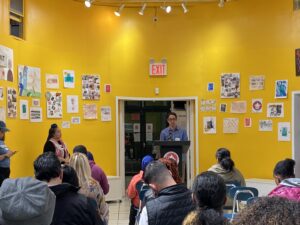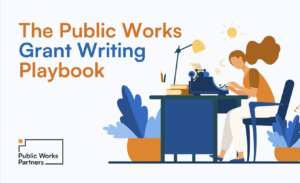Offshore wind farms are increasingly hailed as an answer to many of our most urgent energy issues, as well as a vehicle for job creation and technological innovation. The Biden administration recently announced a new national agenda for this growing industry, which includes a goal of deploying 30 gigawatts of offshore wind by 2030 and $3 billion in Department of Energy (DOE) Loan programs, to spur a significant increase in wind energy projects. The President and the Bureau of Ocean Energy Management (BOEM) also announced the creation of a new priority Wind Energy Area in the New York Bight—an area of shallow waters between Long Island and the New Jersey coast where several wind farm-related projects are already underway. The federal commitment to advancing programs and initiatives to support this critical infrastructure is necessary, and we hope that as these programs take root, government and industry leaders consider and promote the varied ecological and economic contributions wind farms can have on the surrounding community. This will take transparent communication between developers, operators, and community members from the first phases of planning to build relationships and advance the projects as a benefit to each community specifically, as well as the region.
Environmental contributions
When people think of offshore wind farms, they generally think of their low environmental impact compared to other prevalent forms of energy production. But wind farms can also present new ecological challenges. Marine life is often put at increased risk as a result of the development of offshore wind farms, which can disrupt migratory patterns and habitats. Noise, both from construction of the wind farms and their operation, can have a significant impact on marine life. However, through intentional placement of the farms away from important habitats and thoroughfares, as well as the use of new technology that lessens the need for pile-driving, developers can minimize disruption. Additionally, the space underneath operating turbines can provide new, protected habitats for vulnerable species that are at risk of overfishing. Seabeds that have been destroyed by the weight of heavy nets can rebuild, allowing diminished populations to flourish and expand throughout the area. Also, wind farms do not produce harmful emissions or pollution while generating energy, leading to cleaner air for surrounding communities. The considerations outlined here vary based on conditions specific to each new offshore wind farm. Wind farm developers should start working with community members to identify and understand their concerns about the adverse environmental implications of the farm early in the process so that they can develop policies and campaigns that address these concerns.
Economic Contributions
Communities have also expressed apprehension about the presence of large turbines off the coast because of their perceived economic impact. While new offshore wind farms promise economic activity stemming from their construction and maintenance, developers will have to ensure that the immediate community benefits from this activity. In addition, worries about the impact on local marine-based economies, such as fishing and tourism, are likely to remain. A study of the Block Island Wind Farm, the only operational offshore farm in the U.S., found a blend of positive and negative perceptions of the farm, ranging from a loss of fishing ground during construction to an increase in recreational fishing opportunities. Turbines are generally not viewable about 26 miles offshore, and their presence may even serve as an attraction for tourists. Block Island Wind Farm also set an example for job creation through a combination of state-backed local hiring standards and a commitment to hiring union workers on the part of the developer. Understanding the concerns of local communities and actively working to develop pathways to jobs and protections for local economies, alongside educational campaigns on the economic opportunities of the farms, will be essential.
Takeaways
While the way forward for wind farms may involve some pushback from community members, a transparent outreach and learning campaign will support consensus building around the projects and inform solutions that meet the needs of each community and clarify the local benefits of the farms. The U.S.’s late entry into offshore wind means that there is a wealth of information from Europe on the impacts of these farms on local ecologies and economies, which should be drawn on as guides to address many of these concerns. Several research studies designed to analyze possible environmental impacts and improve processes at current wind farm projects are also underway, which will add to this body of research and support future projects. As these projects ramp up, though, it is critical for companies to commit themselves to public engagement. Creating transparent communications with local communities from the first phases of planning to build relationships and trust can improve the project and help mitigate complications.
Public Works is committed to designing community-centered economic development strategies that promote community members’ goals and position them to thrive into the future. We take an equity-centered approach to outreach and initiative design, ensuring that all groups, especially those that have been historically underrepresented, have a platform. Public Works recognizes the importance of this moment to push forward these projects, given the historic nature of the federal government’s support for offshore wind farm development on the east coast, the critical need to design greener, more efficient infrastructure, and the unique opportunity to design equitable workforce systems that will support innovation for years to come. Have questions about how we can help? Get in touch by emailing info@publicworkspartners.com





 Public Works Partners is a WBE/DBE-certified urban planning and consulting firm. Our expertise lies in creating innovative, equitable, and sustainable solutions to complex problems.
Public Works Partners is a WBE/DBE-certified urban planning and consulting firm. Our expertise lies in creating innovative, equitable, and sustainable solutions to complex problems.